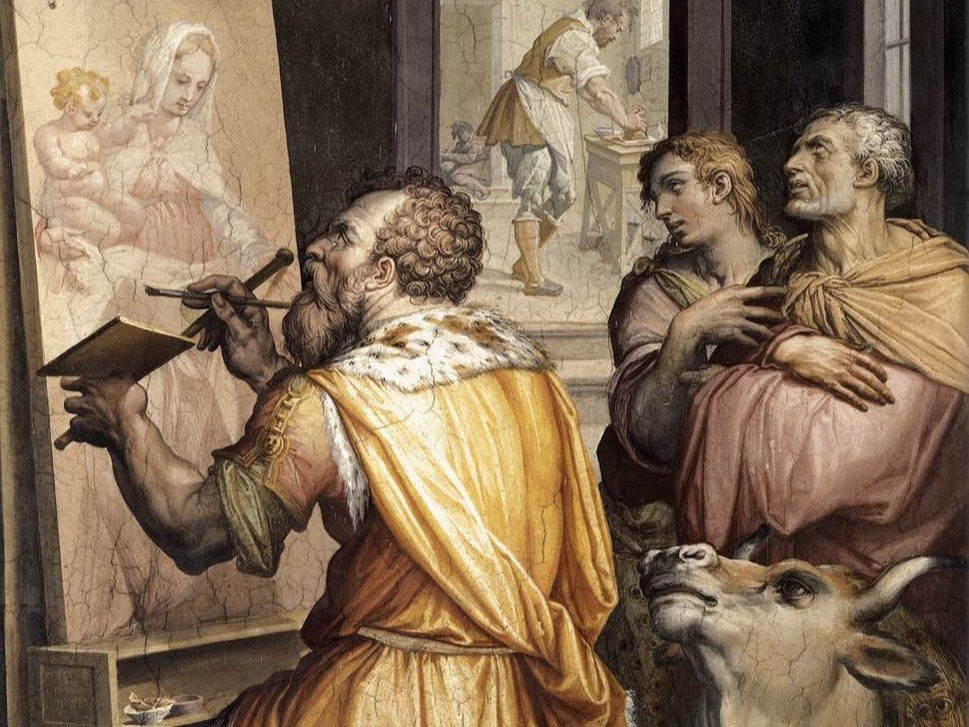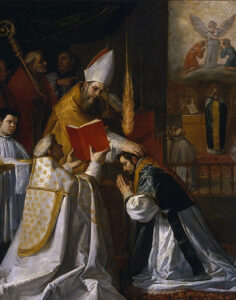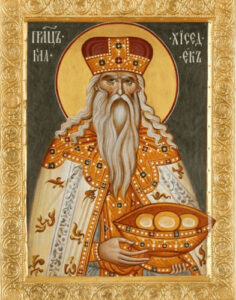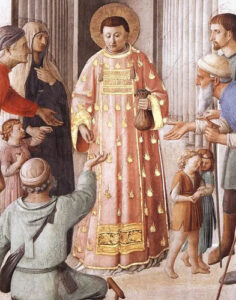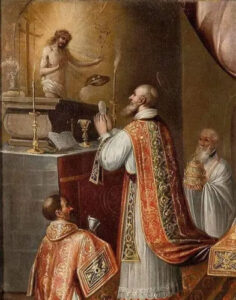Feast of St. Luke, Evangelist
Homily Preached at the National Shrine of St. Elizabeth Ann Seton in Emmitburg, MD
This Gentile origin explains why his Gospel highlights so repeatedly that salvation is now attainable by all peoples. Hence the angels, at the birth of Our Lord, spoke of peace for “all men of good will” (Lk 2:14); Christ prophesied that men from all over the world would come to believe (cf. Lk 13:28 ff.); and finally, after resurrecting, Christ spoke of how the repentance of sins would be preached to all nations (Lk 24:46).
Now, St. Luke was not an eyewitness to the life of Jesus, so he needed to depend on others to find out what Jesus said and did. The most unique part of Luke’s Gospel are not so much due to his own genius, but rather the testimony of a remarkable witness which he is believed to have consulted: the Mother of God herself.
Fulton Sheen notes that Our Lady spoke seven times in scriptures.[4] Of these seven times, five of them are present in Luke’s Gospel. The most important moments of Our Lady’s life are recounted in St. Luke’s Gospel with a perspective which could only have been given by Mary herself. If not for St. Luke’s Gospel, the way in which the Incarnation took place would be almost entirely unknown and this mosaic of the Annunciation would never have been crafted. The Magnificat which was sung by Mary at the Visitation to her relative Elizabeth is also only transmitted by Luke’s Gospel. And let’s not forget that Luke also wrote the Acts of the Apostles where he specifically mentions that Our Lady was present with the apostles the day the Holy Spirit descended upon them at Pentecost.
It is a dogmatic teaching of our faith that God, as the author of scriptures, inspired the sacred authors of the bible to write down all that was necessary for our salvation and nothing more than what He wanted them to write.[5] So it is God’s will that we have this intimate knowledge of Our Lady’s life. God, like a good Father, desires that we have knowledge of she who is our mother.
Traditionally, St. Luke has been known as an artist who actually painted a portrait of Our Lady while she was still alive. Regardless of whether this painting has been conserved until today, we the masterpiece of this artist, his Gospel, which depicts the person of the Blessed Virgin Mary in a vivid manner. Meditating on his Gospel, we can learn not only from those few precious words of Our Lady but also from her deeds.[6]
Now what do we see her doing? Twice St. Luke tells us she treasured the word of God[7] which was spoken to her and pondered it in her heart. This is a lesson for all of us. We too need to read and ponder the word of God which is the foundation of any knowledge of Jesus and Mary.[8]
May this woman who taught Jesus, the Word of God, how to read the Scriptures teach us the great treasure which is contained in them so that we might learn from both her words and deeds contained therein.
[2] Also note that Luke descirbes with greater precision that Mark the origin, duration, and method of curing, as well as the end of the illness (cf. Lk 8:27-29; 8:43-47). Above all, he judges the doctors much more benevolently that Mark (cf. Lk 8:43, 5:26). Christ appears as the divine doctor who calls himself a doctor (Lk 4:23) who came to cure all (Lk 5:17; 6:19).
[3] Probably between the years 58-61 AD.
[4] Fulton Sheen, Seven Words of Jesus and Mary: Lessons from Cana and Calvary (Liguori Press: Missouri, 2001). Really six but he makes the Fiat count for two: Lk 1:34, 38, 38, 46-55; 2:28; Jn 2:3, 5.
[5] Cf. CCC 105-6: “God is the author of Sacred Scriptures… “To compose the sacred books, God chose certain men who, all the while he employed them in this task, made full use of their own faculties and powers so that, though he acted in them and by them, it was as true authors that they consigned to writing whatever he wanted written, and no more.” (citing Dei Verbum, 11)
[6] This was a basic theological principle of St. Thomas Aquinas regarding the words and deeds of Jesus (cf. Commentary to Gospel of St. John) but it can be applied to Mary without much difficulty.
[7] Once is the prophecy of Simeon in the temple (Lk 2:19) and the other are the words of Jesus Himself after being lost in the temple (Lk 2:51).
[8] “Ignorance of Scripture is ignorance of Christ.” (St. Jerome)

